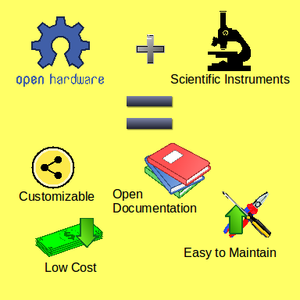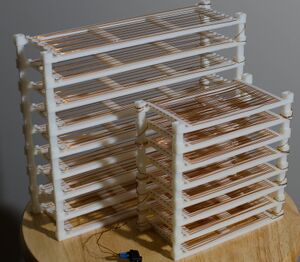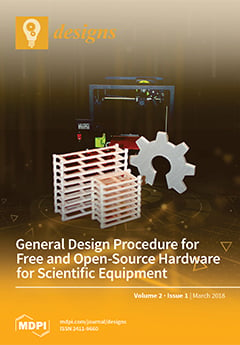
Distributed digital manufacturing of free and open-source scientific hardware (FOSH) used for scientific experiments has been shown to in general reduce the costs of scientific hardware by 90–99%. In part due to these cost savings, the manufacturing of scientific equipment is beginning to move away from a central paradigm of purchasing proprietary equipment to one in which scientists themselves download open-source designs, fabricate components with digital manufacturing technology, and then assemble the equipment themselves. This trend introduces a need for new formal design procedures that designers can follow when targeting this scientific audience. This study provides five steps in the procedure, encompassing six design principles for the development of free and open-source hardware for scientific applications. A case study is provided for an open-source slide dryer that can be easily fabricated for under $20, which is more than 300 times less than some commercial alternatives. The bespoke design is parametric and easily adjusted for many applications. By designing using open-source principles and the proposed procedures, the outcome will be customizable, under control of the researcher, less expensive than commercial options, more maintainable, and will have many applications that benefit the user since the design documentation is open and freely accessible.

- OpenSCAD source code for slide drier
- Quick download of stls [1]
- Officially certified open source hardware by OSHWA. http://certificate.oshwa.org/certification-directory/
See also[edit | edit source]
- Open Source Lab
- Building research equipment with free, open-source hardware
- Open source science
- Open-source hardware
- Belt-Driven Open Source Circuit Mill Using Low-Cost 3-D Printer Components
- Open-source syringe pump
- Open Source 3-D Printed Nutating Mixer
- Open Source Low-Cost Power Monitoring System
Media[edit | edit source]

- 5 keys to building open hardware - Opensource.com (18,731)
- 構建開源硬體的 5 個關鍵點 - Read01 (China, 3,079)
- 最大化你的项目影响。 Linux.cn (China, 13,039)
- 构建开源硬件的 5 个关键点 | Linux 中国 - Career Engine (China 76,224)
- 构建开源硬件的 5 个关键点 | Linux 中国 - Gzhschoulu (China, 168k)
- 构建开源硬件的 5 个关键点 Jishux (China)






